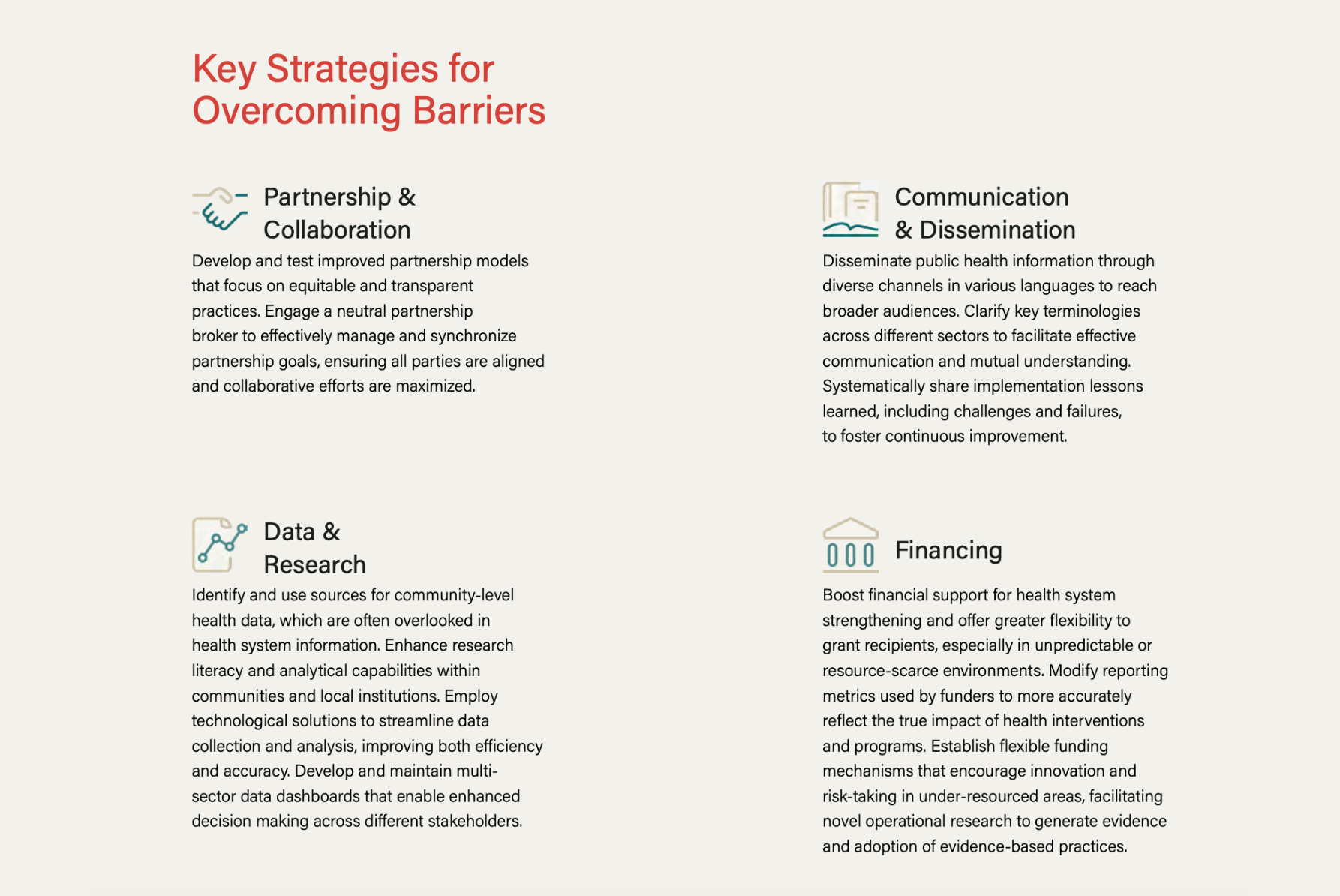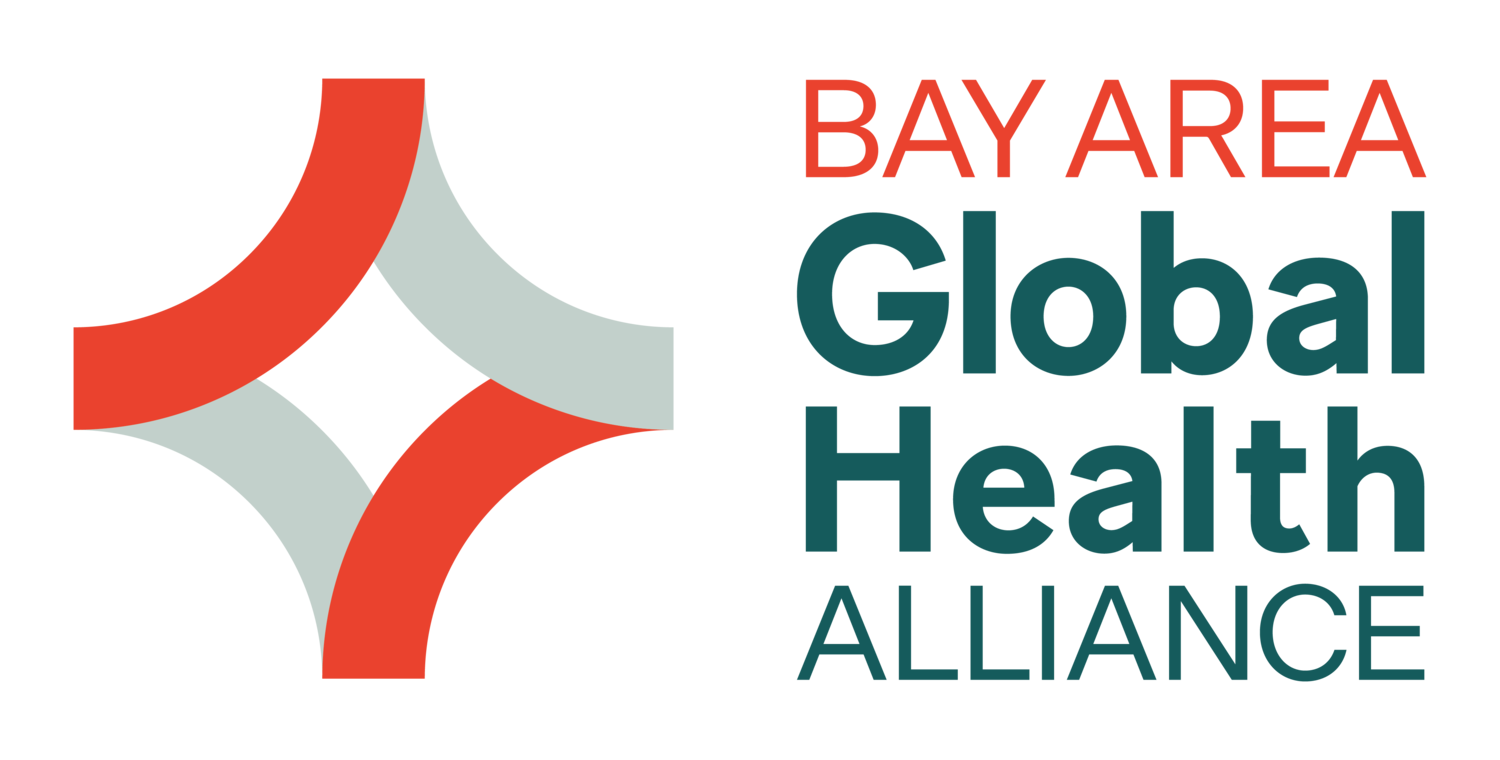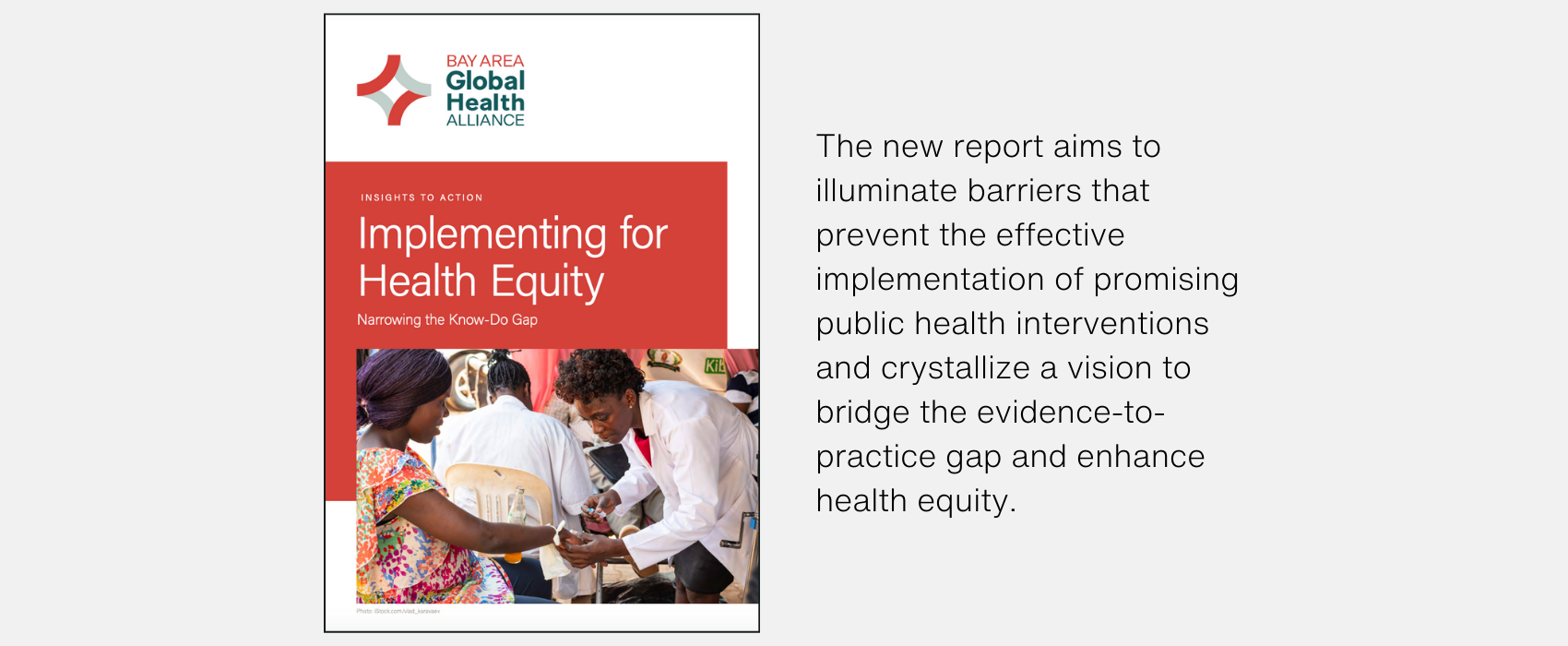Considerable advancements and significant investments in global health have marked recent years; yet numerous evidence-based interventions continue to fall short of their full potential. These shortcomings are often due to systemic barriers that exacerbate health inequities, according to a new study by the Bay Area Global Health Alliance.
The Alliance’s study, leveraging the multidisciplinary and multi-sector strength of its members, aims to understand these challenges through the lens of implementation science. The project engaged nearly 150 global health leaders across various disciplines and sectors to inform and enhance the design, implementation, and scalability of health solutions.
“We identified barriers experienced within and across sectors,” said Sara Anderson, Alliance executive director. “And we pinpointed actionable ideas for more effective design, implementation, and evaluation of interventions to close the evidence-to-practice gap and achieve greater impact and equity.”
The study hypothesized that improved models of multi-sector collaboration could significantly enhance knowledge sharing, from product design through delivery. The report outlines the barriers and actionable strategies and frameworks necessary to close the evidence-to-practice gap and achieve greater health equity. These insights, recommendations, and case studies are designed to guide stakeholders across the public, private, and nonprofit sectors towards more effective and equitable health outcomes.
“Our goal is to see these strategies explored further, fostering better collaboration and ultimately improving global health outcomes,” added Abbey Kocan, deputy director of the Alliance.
Specifically, the report identifies seven major barriers and tensions that hinder the equitable delivery of healthcare services, including: barriers in partnership development; differing definitions of success among partners; lack of candid communication; late community / client engagement; digital solutions not adapted to context; insufficient data; and very few sustainable business models in the context of achieving health equity.

The report also outlines four key strategies for overcoming these barriers, focusing on partnership and collaboration, communication and dissemination, data and research, and financing.

“Through the lens of implementation science, this insight report aims to illuminate barriers that prevent the effective implementation of promising public health interventions, and crystallize a vision where robust partnerships, transparent communication, community-centered design, cutting-edge technologies, innovative financing, and strong data-driven strategies are key actions taken to bridge the evidence-to-practice gap and enhance health equity,” said Anderson.
While the first phase of the study is complete with the report, the Alliance is continuing its research on the know-do gap, focusing on the strategy of enhancing partnerships and collaboration.
“We are digging deeper into the barriers to developing partnerships and potential strategies for overcoming them. We hope to develop or refine and eventually test an improved model for partnership and collaboration,” said Kocan. “We hypothesize that there are tools and models that exist, but that they are largely unknown or not easily accessible for (or relevant to) the stakeholders who need them, and that by developing an operational model or framework for optimizing partnerships and collaboration we can narrow the know-do gap and accelerate health equity. The potential for transformative change through implementation science and equitable practices is profound.”
The Alliance is grateful to the study participants for their candid insights and recommendations, to our board of directors and partners who gave their technical expertise, to our global health fellow Aditi Rao for spearheading the research, and to Gilead Sciences for its support in making this exploration possible.
Download the Report

